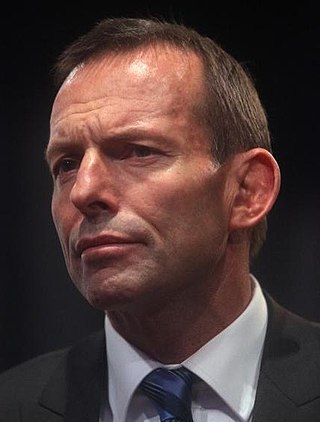Comparison of methods
The older, conventional method, called the order-elected method (or similar) allocates the six longer terms in each state to the first six (of twelve) senators elected.
The newer method, called the recount method, attempts to allocate the six longer terms to those senators that would have been elected in a regular half-senate election. This requires the Electoral Commission to conduct a recount of all the ballots in each state. In this special recount, only the twelve elected senators are candidates [34] and only six 'seats' are to be filled. The winners of the special recount would then receive the longer (six-year) terms, and the remainder get the shorter (three-year) terms. The first step in such a recount is to re-allocate votes for all other candidates (outside the twelve elected) according to their preferences. This differs from the normal practice of awarding seats to candidates with a full quota of first preference votes as the first step, prior to eliminating minor candidates. The rationale for limiting the recount to the twelve elected candidates is to eliminate the possibility of an unsuccessful candidate 'winning' a six-year term as a result of the complex preference flows. [35]
Fairness and preferential voting
The recount method is generally described as fairer, on the basis that it better reflects preferential (instant runoff) voting [36] and proportional representation [24] through the allocation of long terms according to a method almost identical to that used in a normal half senate election, which combines preferential voting and proportional representation. The order-elected method is more analogous to the plurality (first past the post) method rather than preferential voting, in that the candidates elected earliest in the count have a higher proportion of first preference votes to preference votes distributed from eliminated candidates. For a single member electorate (e.g. in the lower house) a candidate must secure 50% () of the vote to win a seat under preferential voting, whereas for first past the post voting a candidate can theoretically win a seat with as few as () votes, where n is the number of candidates. For a six-member electorate with preferential voting (e.g., a normal half senate election and the recount method), a candidate must secure a quota of 14.28% (), while for a 12-member electorate, a candidate requires 7.69% (). The order-elected method requires the six 'winners' to only gain 7.69% () to obtain a long term. Thus, when there is a difference between the two outcomes, it reflects the fact that the order-elected method introduces some arbitrariness to the process, by not considering the preferences of up to 53.85% () of voters in allocating the first six seats. This arises from the fact that seats are 'awarded' as soon as a candidate gains a quota of votes, often before any minor candidates are eliminated and their preferences distributed. For example, if the most popular candidate has two full quotas of first preference votes, he gains the first seat, and all those votes are then distributed according to their preference, but at only half their original value. If they all then go to the same candidate, he will also have a full quota, and will be awarded a seat prior to the elimination of the least popular candidate. Thus a candidate who gains the sixth long term seat under the order-elected method, but not under the recount method, presumably gains more support from first preference votes and the redistribution of votes from elected candidates rather than from the redistribution of preferences from eliminated candidates.
It may at first appear that the order-elected method favours the major parties through this greater reliance on first preference votes, however in the two double dissolution elections in which the special recount has been conducted, the order-elected method benefited the Democrats by two seats, Labor by one (net) and Liberal by one (net) seat. This is because the first seats are awarded to candidates with the largest block of first preference votes, so the largest blocks are reduced first. The full quotas of first preference votes in support of the major parties are often exhausted by the time the sixth candidate is elected, so that the first preference votes given to a major party, to the extent they are distributed as a block, will fall anywhere between zero and one full quota in remaining value. This makes the difference in outcome between the two methods difficult to predict or generalise. It follows from the method definitions that the order-elected method will disadvantage those candidates who rely most heavily on accumulating preferences from eliminated candidates to gain the final seat in a normal half senate election. It is difficult to generalise about what type of candidate or party, if any, falls into this category in a consistent manner, though it may be the case that the smaller minor parties and independents who just scrape in, in a normal half senate election, will be consistently (but rarely) disadvantaged.[ citation needed ]
Only zero or one long term seat in each state has been affected by the difference between the two methods. It is however possible that more than one long term seat could be affected.
Commentary on methods
The following people have described the recount method as fairer:
- Antony Green [30]
- Alastair Ficher, a Senior Lecturer in Economics from the University of Adelaide, who originally proposed the new method to the Joint Select Committee [37]
- Labor's Bob Hawke, in passing the 1984 Legislation [22]
- The candidates who would have benefited from it, such as Derryn Hinch and Lee Rhiannon in 2016 [22]
- Labor Senator Robert Ray in 1983 [38]
- Liberal Senator Baden Teague in 1987 appealed in parliament to use the new method on the basis of principle, fairness, honesty, conscience and maturity [39]
The major parties supported the recount method in the Joint Select Committee on Electoral Reform in 1983 (which included Democrat, Labor and Liberal representatives [40] ), in passing the 1984 legislation and the 1998 and 2010 bipartisan senate resolutions.
In 2016, Labor Senate Leader Penny Wong described the order-elected method as consistent with convention and reflecting the will of voters. [32] Liberal deputy Leader in the senate, Mathias Cormann described the order-elected method as the fairest and reflective of the will of the people. [32]












